theartsdesk at the Kilkenny Arts Festival 2022 - a safe space to reflect on horrors | reviews, news & interviews
theartsdesk at the Kilkenny Arts Festival 2022 - a safe space to reflect on horrors
theartsdesk at the Kilkenny Arts Festival 2022 - a safe space to reflect on horrors
Masha Gessen, Shostakovich and Shakespeare’s Prospero wrestle order from chaos
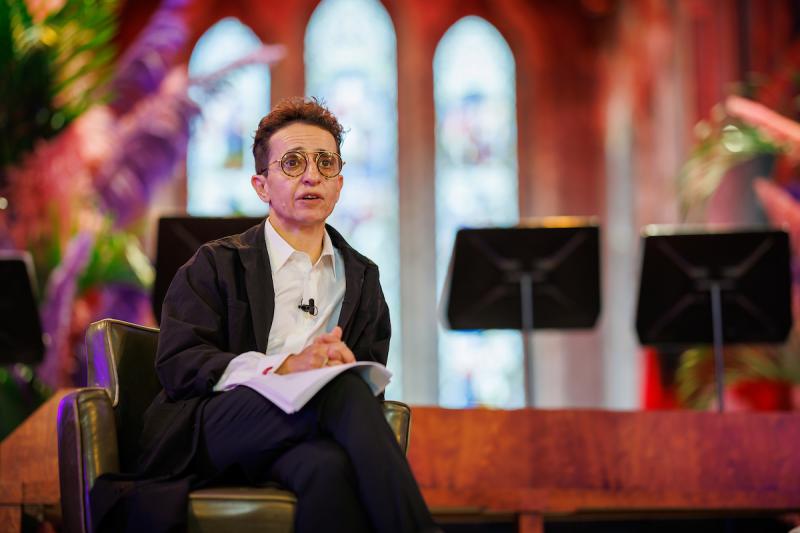
Essay-writing can be a great art, at least when executed by Hubert Butler of Kilkenny, on a par - whether you know his writing or not, and you should – with Bacon, Swift and Orwell. The same goes for speechifying. That level I witnessed, at the start of my three days at the Kilkenny Arts Festival, from Masha Gessen delivering the Hubert Butler Annual Lecture, and at the end from Professor Roy Foster, Fiona Shaw and the winner of this year’s Huber Butler Essay Prize, Kevin Sullivan.
Disclosure first: it was my partner who set up the Prize as part of HEART London, a potential home for European Arts in the UK when Brexit loomed. So I won’t dwell on this year’s streamlined event in the stunningly converted Parade Tower of Kilkenny Castle. But Gessen’s timely lecture, and the events in between – three concerts and a play – deserve full scope. The entire programme, a credit to the very approachable festival director Olga Barry, was a marvel, with events from many other top-notch Irish ensembles as well as distinguished visitors from Berlin, New York and Sweden.
The beauty of all I encountered was absolute clarity, Gessen in St Canace’s Cathedral, the Carducci Quartet in their cycle of the 15 Shostakovich quartets every lunchtime in the perfect space of St John’s Priory – I heard quartets 5 to 9 – and Irish theatre company Rough Magic’s outdoor production of The Tempest (pictured below) all marshalling order and lucidity from chaos. Even the serene odd man out, with world class Irish mezzo Tara Erraught joining Peter Whelan and the Irish Baroque Orchestra in a programme of pure delight, celebrated the achievements of a castrato with Irish connections, Giusto Ferdinando Tenducci, whose status as a great artist did not save him from savage treatment and imprisonment at the hands of a capricious society. (debt and secret marriage to an Irish girl were the causes). 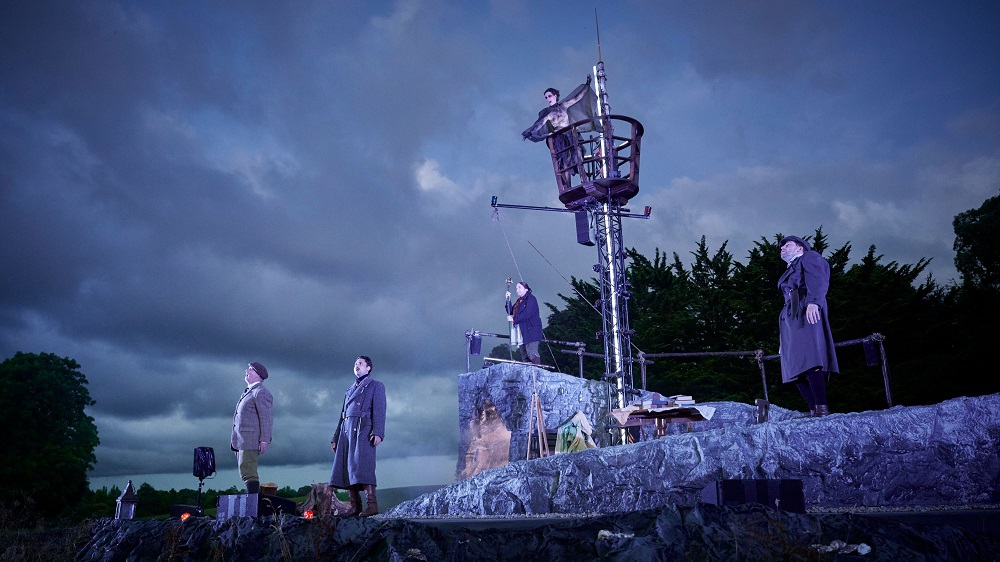 Hubert, most distinguished scion of the Butlers of what is now Kilkenny Castle (pictured below), handed over to the state and with its magnificent parklands above the River Nore open to all, celebrated both the local and the universal; he was both a Kilkenny man up to his death at the age of 90 and the most passionate of Europeans.
Hubert, most distinguished scion of the Butlers of what is now Kilkenny Castle (pictured below), handed over to the state and with its magnificent parklands above the River Nore open to all, celebrated both the local and the universal; he was both a Kilkenny man up to his death at the age of 90 and the most passionate of Europeans.
Having observed the rise of anti-Semitism during his travels during the 1930s, in 1938 he helped hundreds of Viennese Jews to flee the Nazis, and he was among the first to draw attention to the forced conversion of two and half million Orthodox Serbs to Catholicism, an event which involved ethnic cleansing; his campaign set him at serious loggerheads with the Irish authorities. You can’t do better in becoming acquainted with his lucidly expressed ethics than to invest in two volumes, which I read in the beautifully produced Notting Hill editions: The Invader Wore Slippers: European Essays and The Eggman and the Fairies: Irish Essays. 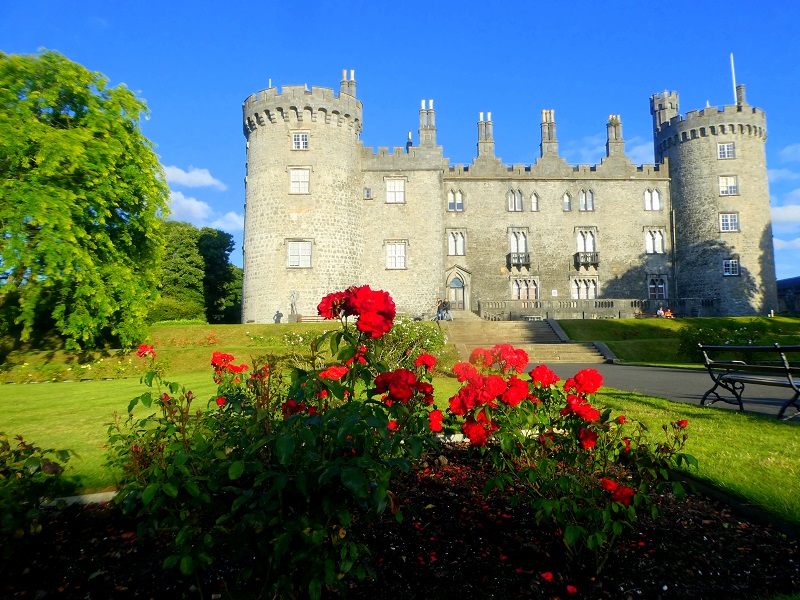
So much of what Gessen had said resonated in the Shostakovich quartets I heard; yes, they are total masterpieces in the abstract, but the personal expression of circumstances in Stalin’s vast prison camp that was the Soviet Union then - and which Russia is now - is also expressed not only in violence but also “the possibility of hope”. That's present even in the lamenting quiet close of No. 5, very apparent in the more emotionally distanced No. 6, abrasively assertive at the end of No. 9. 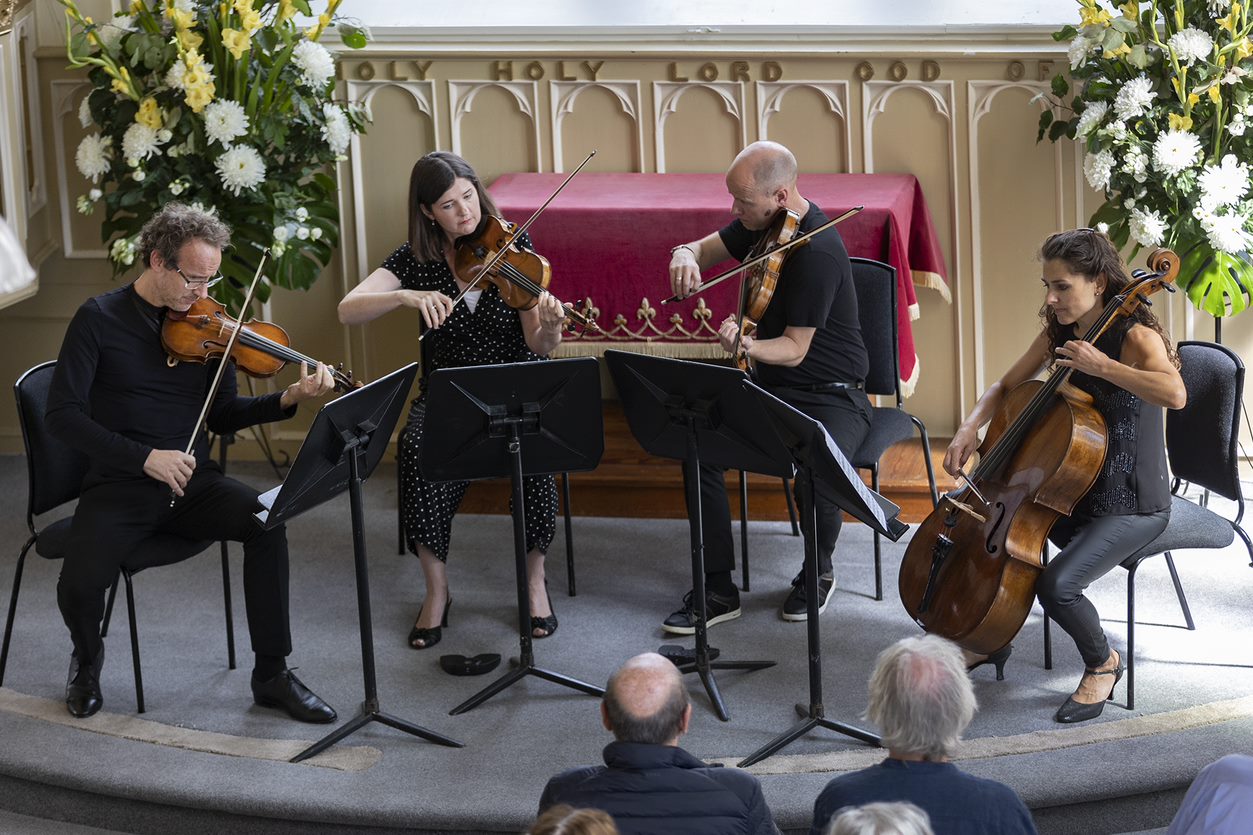 Pithily introduced by first violinist Matthew Denton (pictured above with Michelle Fleming, Eoin Schmidt-Martin and Emma Denton), the Carduccis’ interpretations may not always have been the ultimate word in fierceness or depth, but – I repeat – maintained absolute clarity of expression. And though I had to leave the cycle behind, there could have been no more impressive kaleidoscope of Shostakovich’s quartet writing than the second of the two concerts I heard – starting with the elliptical Seventh, highlighting tragic autobiography in the best-known of all 15, the Eighth, sounding so fresh here, and ending with the huge adventure of the Ninth, which has become a favourite. Not least for the multifacetedness of its finale; cellist Emma Denton giving an unforgettable cadenza before the bewildering-exhilarating final cavalcade.
Pithily introduced by first violinist Matthew Denton (pictured above with Michelle Fleming, Eoin Schmidt-Martin and Emma Denton), the Carduccis’ interpretations may not always have been the ultimate word in fierceness or depth, but – I repeat – maintained absolute clarity of expression. And though I had to leave the cycle behind, there could have been no more impressive kaleidoscope of Shostakovich’s quartet writing than the second of the two concerts I heard – starting with the elliptical Seventh, highlighting tragic autobiography in the best-known of all 15, the Eighth, sounding so fresh here, and ending with the huge adventure of the Ninth, which has become a favourite. Not least for the multifacetedness of its finale; cellist Emma Denton giving an unforgettable cadenza before the bewildering-exhilarating final cavalcade.
In Shakespeare’s The Tempest, the creative artist marshalling chaos and dislocation is Prospero, whose task is to bring treacherous enemies and schemers to heel. The only two convincing productions I’ve seen of this elusive swansong have both featured female Prosperos – Harriet Walter in Phyllida Lloyd’s wondrous women’s-prison Donmar Shakespeare trilogy, and here Eleanor Methven for Rough Magic – commanding, tender, humorous, inflecting the voice with such a range. But when has the one courtier who was kind to her, Gonzalo, ever been more important? By casting the equally strong Gina Moxley in the role (pictured below), director Lynne Parker stressed the ultimately ineffectual strategems of bullying men versus the staying power of resourceful women. 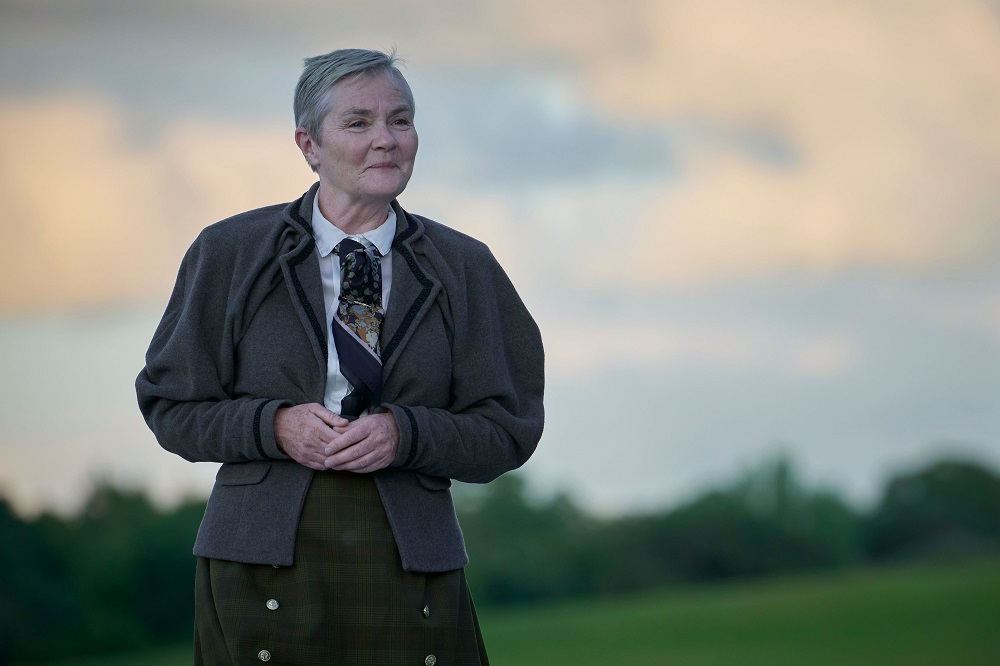 The Stephano-Trinculo-Caliban scenes were played not for desperate laughs, but with a realistic edge, a very real threat, led by Rory Nolan’s roaring drunk; further coups were achieved by double-casting John Cronin as Caliban and Antonio, Rowan Finken as bad Sebastian and good young Ferdinand. His scenes with a more than usually feisty Miranda (Gillian Buckle) were pure energetic charm.
The Stephano-Trinculo-Caliban scenes were played not for desperate laughs, but with a realistic edge, a very real threat, led by Rory Nolan’s roaring drunk; further coups were achieved by double-casting John Cronin as Caliban and Antonio, Rowan Finken as bad Sebastian and good young Ferdinand. His scenes with a more than usually feisty Miranda (Gillian Buckle) were pure energetic charm.
In fact there wasn’t a weak characterisation. Martha Breen’s Ariel (pictured below with Methven) matched her mistress for vocal range and spent a lot of her time in the crow’s nest atop the mast on a set in the middle of the beautiful Parklands which accommodated slipway and Prospero’s study. 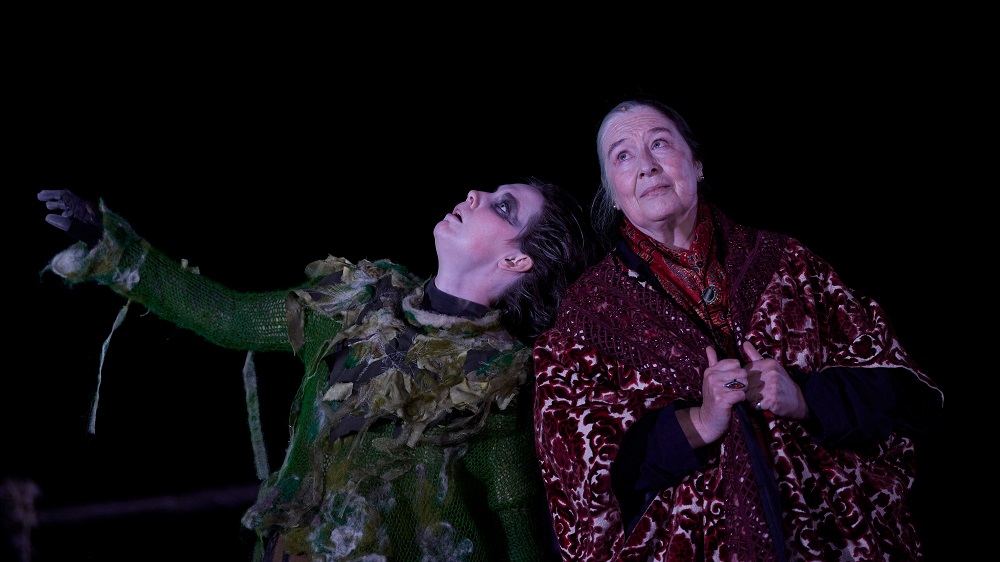 How, you might ask, to conjure a storm in a landlocked park on the most beautiful of summer evenings?. Answer: from a distance, Prospero commanding it and the voices of the court folk on board picked up by the mast as radio-aerial. Composer and sound designer Denis Clohessy worked wonders, starting with the lapping of waves we heard behind and around us before the drama began. Most of the stranger magic happened after the interval, where Sarah Jane Shiels’ lighting could come into its own. We missed only the Masque; but there could hardly have been greater focus or skill in the interplay of all the characters.
How, you might ask, to conjure a storm in a landlocked park on the most beautiful of summer evenings?. Answer: from a distance, Prospero commanding it and the voices of the court folk on board picked up by the mast as radio-aerial. Composer and sound designer Denis Clohessy worked wonders, starting with the lapping of waves we heard behind and around us before the drama began. Most of the stranger magic happened after the interval, where Sarah Jane Shiels’ lighting could come into its own. We missed only the Masque; but there could hardly have been greater focus or skill in the interplay of all the characters.
Our Prospero back in St Canice’s was Tara Erraught, the total artist. Every singer must know Giordani’s “Caro mio ben” as the first port of call in lessons, and first choice in that infamous book of Arie Antiche. I never thought it would bring me to tears, but Erraught’s long-lined delivery and exquisite dynamics, perfectly complemented by the IBO and Whelan, made one realise what a little masterpiece it is, all the more surprising after the dramatic realisation of the same composer’s “Lament of Queen Mary [Stuart]”. Erraught's diction is always perfect too, enhancing the range of expressive colours in the voice. The subject of the evening’s entertainment, castrato Tenducci (pictured above with Erraught), had met Giordani in the 1760s at Dublin’s Smock Alley, and both numbers were popular items in his repertoire. He made his name in the premiere of Arne’s Artaxerxes at the Drury Lane Theatre, and there could be no better showcase for Erraught’s charismatic mezzo than the coloratura agility “Amid a thousand racking woes” followed by the melting mood of “Water parted from the sea”.
The subject of the evening’s entertainment, castrato Tenducci (pictured above with Erraught), had met Giordani in the 1760s at Dublin’s Smock Alley, and both numbers were popular items in his repertoire. He made his name in the premiere of Arne’s Artaxerxes at the Drury Lane Theatre, and there could be no better showcase for Erraught’s charismatic mezzo than the coloratura agility “Amid a thousand racking woes” followed by the melting mood of “Water parted from the sea”.
Butler would surely have loved the interplay of Irish, Scottish and continental European in the programme. Giordani’s “Irish medley” culminated in the most exhilarating of jigs; co-star of the evening, oboist Mark Baignet shone in Johann Christian Fischer’s Variations on “Gramachree Molly”; and Johann Chistian Bach’s fantasia on “The Braes of Ballenden”, with starring roles for violin, viola, cello and oboe between Erraught’s vivid projection of the verses, first performed by Tenducci, of course, was a total winner. 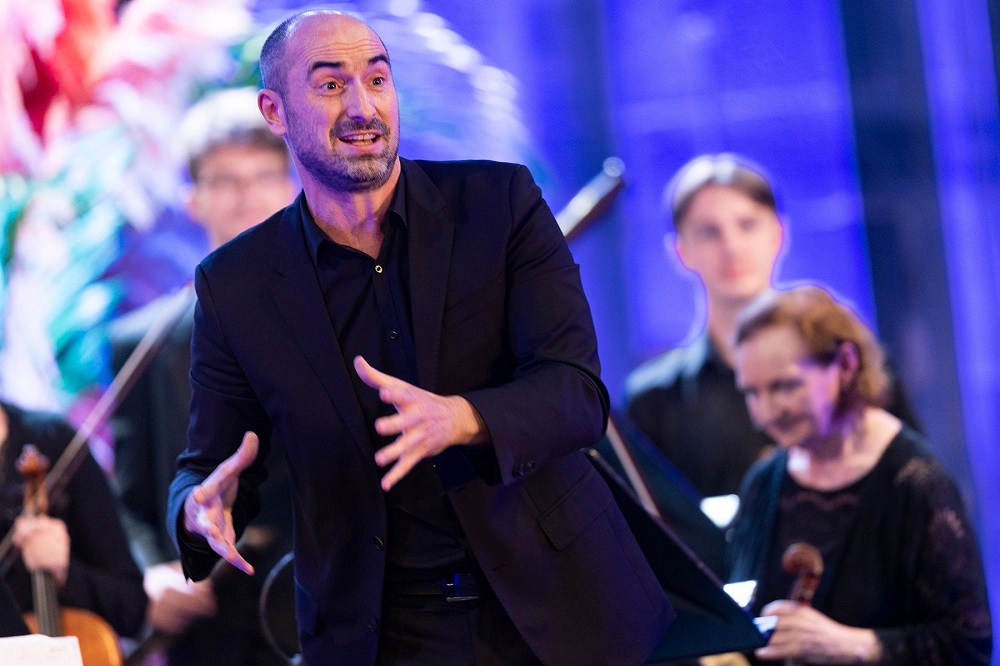 Two “Dublin” sinfonias by Flemish composer Pieter van Maldere offered very fitful originality, but the now familiar verve of Whelan (pictured above introducing the programme) and co carried them off. And it was wise to end with a real masterpiece, Mozart’s “Exsultate, Jubilate” – Amadeus wrote a work for Tenducci, but it’s been lost – and more vivacious charm from the marvellous Erraught.
Two “Dublin” sinfonias by Flemish composer Pieter van Maldere offered very fitful originality, but the now familiar verve of Whelan (pictured above introducing the programme) and co carried them off. And it was wise to end with a real masterpiece, Mozart’s “Exsultate, Jubilate” – Amadeus wrote a work for Tenducci, but it’s been lost – and more vivacious charm from the marvellous Erraught.
Explore topics
Share this article
The future of Arts Journalism
You can stop theartsdesk.com closing!
We urgently need financing to survive. Our fundraising drive has thus far raised £49,000 but we need to reach £100,000 or we will be forced to close. Please contribute here: https://gofund.me/c3f6033d
And if you can forward this information to anyone who might assist, we’d be grateful.

Subscribe to theartsdesk.com
Thank you for continuing to read our work on theartsdesk.com. For unlimited access to every article in its entirety, including our archive of more than 15,000 pieces, we're asking for £5 per month or £40 per year. We feel it's a very good deal, and hope you do too.
To take a subscription now simply click here.
And if you're looking for that extra gift for a friend or family member, why not treat them to a theartsdesk.com gift subscription?
more Classical music
 BBC Proms: Akhmetshina, LPO, Gardner review - liquid luxuries
First-class service on an ocean-going programme
BBC Proms: Akhmetshina, LPO, Gardner review - liquid luxuries
First-class service on an ocean-going programme
 Budapest Festival Orchestra, Iván Fischer, Edinburgh International Festival 2025 review - mania and menuets
The Hungarians bring dance music to Edinburgh, but Fischer’s pastiche falls flat
Budapest Festival Orchestra, Iván Fischer, Edinburgh International Festival 2025 review - mania and menuets
The Hungarians bring dance music to Edinburgh, but Fischer’s pastiche falls flat
 Classical CDs: Hamlet, harps and haiku
Epic romantic symphonies, unaccompanied choral music and a bold string quartet's response to rising sea levels
Classical CDs: Hamlet, harps and haiku
Epic romantic symphonies, unaccompanied choral music and a bold string quartet's response to rising sea levels
 Kolesnikov, Tsoy / Liu, NCPA Orchestra, Chung, Edinburgh International Festival 2025 review - transfigured playing and heavenly desire
Three star pianists work wonders, and an orchestra dazzles, at least on the surface
Kolesnikov, Tsoy / Liu, NCPA Orchestra, Chung, Edinburgh International Festival 2025 review - transfigured playing and heavenly desire
Three star pianists work wonders, and an orchestra dazzles, at least on the surface
 BBC Proms: Láng, Cser, Budapest Festival Orchestra, Iván Fischer review - idiomatic inflections
Bartók’s heart of darkness follows Beethoven’s dancing light
BBC Proms: Láng, Cser, Budapest Festival Orchestra, Iván Fischer review - idiomatic inflections
Bartók’s heart of darkness follows Beethoven’s dancing light
 Weilerstein, NYO2, Payare / Dueñas, Malofeev, Edinburgh International Festival 2025 review - youthful energy and emotional intensity
Big-boned Prokofiev and Shostakovich, cacophonous López, plus intense violin/piano duo
Weilerstein, NYO2, Payare / Dueñas, Malofeev, Edinburgh International Festival 2025 review - youthful energy and emotional intensity
Big-boned Prokofiev and Shostakovich, cacophonous López, plus intense violin/piano duo
 theartsdesk at the Three Choirs Festival - Passion in the Cathedral
Cantatas new and old, slate quarries to Calvary
theartsdesk at the Three Choirs Festival - Passion in the Cathedral
Cantatas new and old, slate quarries to Calvary
 BBC Proms: Estonian Philharmonic Chamber Choir, Kaljuste review - Arvo Pärt 90th birthday tribute
Stillness and contemplation characterise this well sung late-nighter
BBC Proms: Estonian Philharmonic Chamber Choir, Kaljuste review - Arvo Pärt 90th birthday tribute
Stillness and contemplation characterise this well sung late-nighter
 BBC Proms: Kholodenko, BBCNOW, Otaka review - exhilarating Lutosławski, underwhelming Rachmaninov
Polish composers to the fore in veteran conductor’s farewell
BBC Proms: Kholodenko, BBCNOW, Otaka review - exhilarating Lutosławski, underwhelming Rachmaninov
Polish composers to the fore in veteran conductor’s farewell
 theartsdesk at the Pärnu Music Festival 2025 - Arvo Pärt at 90 flanked by lightness and warmth
Paavo Järvi’s Estonian Festival Orchestra still casts its familiar spell
theartsdesk at the Pärnu Music Festival 2025 - Arvo Pärt at 90 flanked by lightness and warmth
Paavo Järvi’s Estonian Festival Orchestra still casts its familiar spell
 BBC Proms: Batsashvili, BBC Scottish Symphony Orchestra, Ryan Wigglesworth review - grief and glory
Subdued Mozart yields to blazing Bruckner
BBC Proms: Batsashvili, BBC Scottish Symphony Orchestra, Ryan Wigglesworth review - grief and glory
Subdued Mozart yields to blazing Bruckner

Add comment